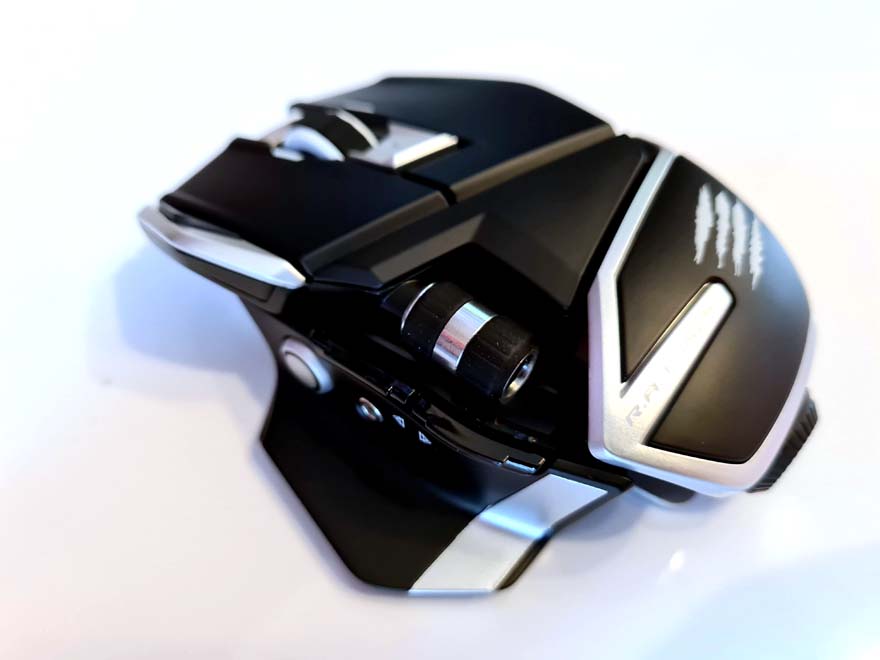Mad Catz R.A.T. DWS Wireless Gaming Mouse Review
Peter Donnell / 4 years ago
A Closer Look & Performance
If you’ve seen any of the R.A.T. gaming mice before, then this one should look pretty familiar to you. It keeps all the common style points, with only minor adjustments. However, the most obvious thing different with this one is the lack of any cable coming out of the front of it.
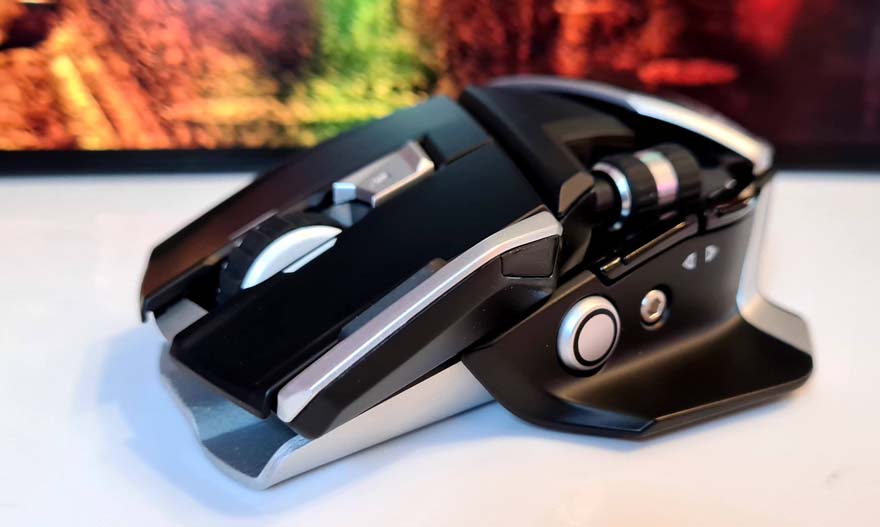
The left side of the mouse looks awesome with that slick two-tone design. You get a matte black mixed with a muted silver finish, and it just gives it a futuristic and premium aesthetic. There’s a programmable button towards the front too, a sniper DPI level button by default, but it’s fully programmable. There’s also the usual forwards and back navigation buttons too.
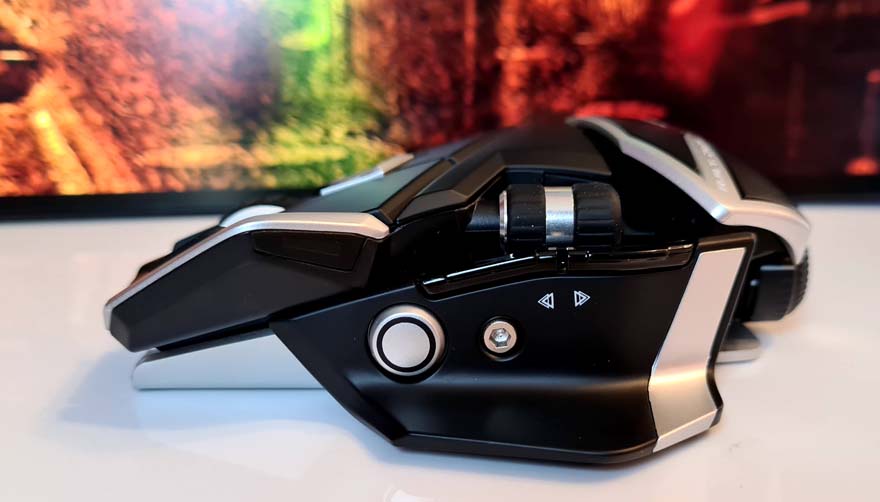
One of the more unique features is the thumb wheel, it’s programmable too, but it’s awesome for zoom levels on Photoshop, or camera distance in MMO games, etc.
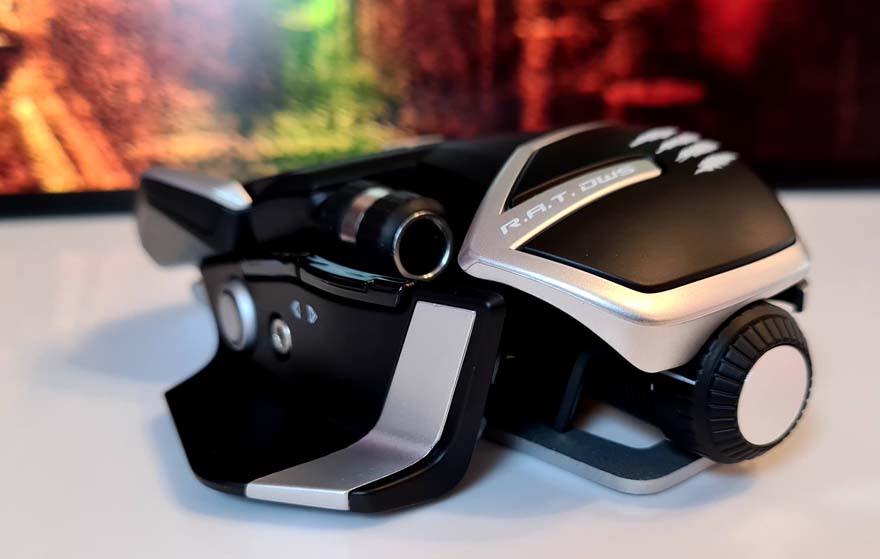
At the back, there’s a plastic cap that is actually covering the battery compartment. This is a weight tuning system on some Mad Catz mice, but of course, that AA battery has to go somewhere!
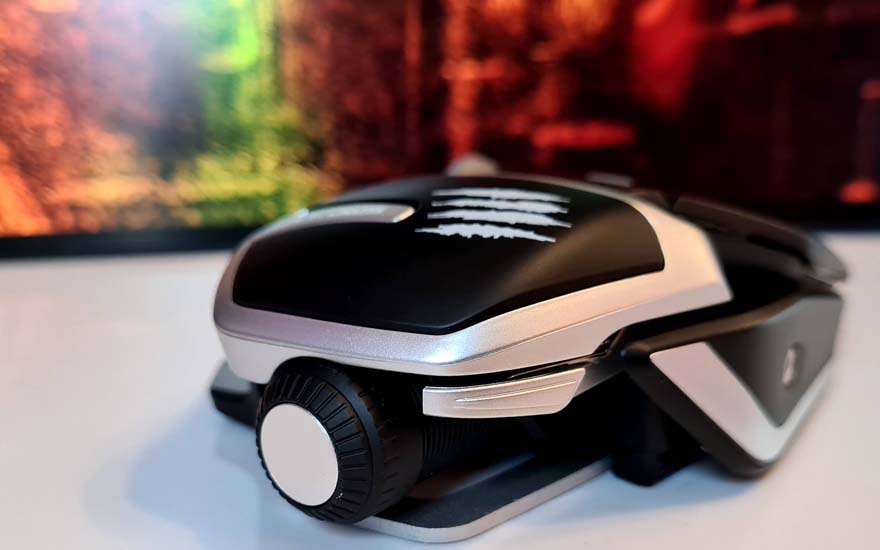
On the right side, there’s a slim grip panel. As you can see, it has a bolt right in the middle of it. With the tool that came in the box, you can remove the side panels and replace them with one of the alternative ones.

Ergonomics are a big thing for this mouse. It’s quite wide, but I have fairly wide hands myself, so it feels very natural. The LMB and RMB are lightly scooped, which promote an excellent finger position for the optimal click.
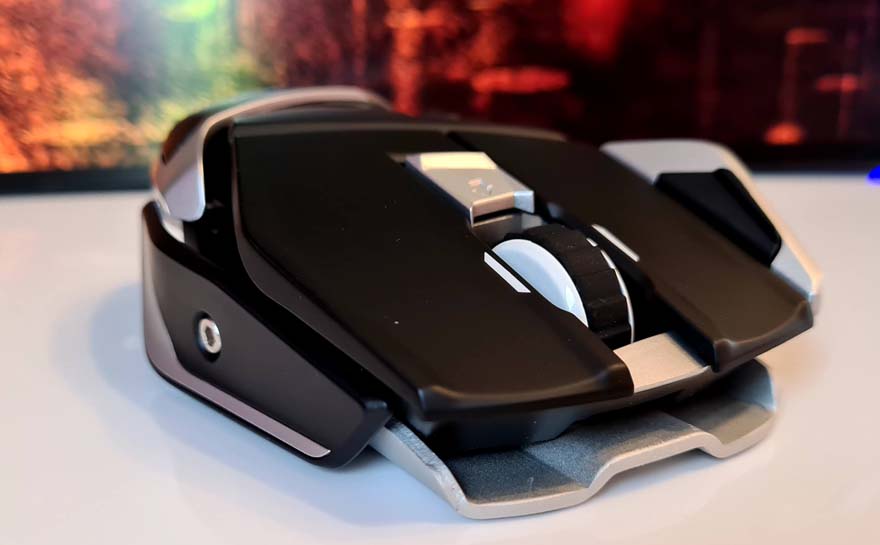
Both the LMB and RMB are mounted on their own individually sprung panel, ensuring no feedback between them. Both of them have a really crisp click, too, thanks to those stunning DEKOTA switches. You can really spam them both consistently, which is great for high CPM games like League of Legends.
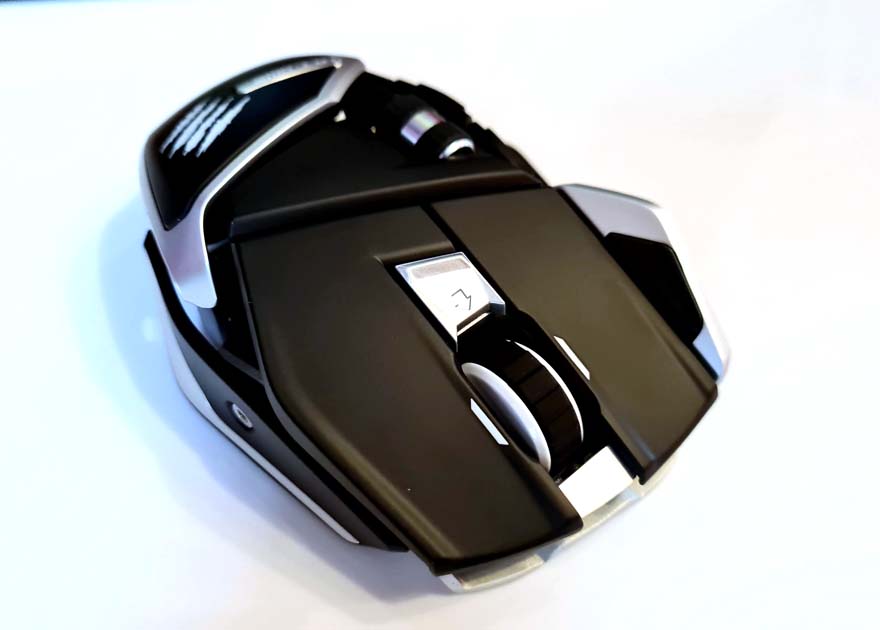
There’s another button tucked on the left front wing too. By default, this is a profile button; handy if you need different uses for the thumbwheel and sniper button, such as switching between gaming and a music/media control mode.
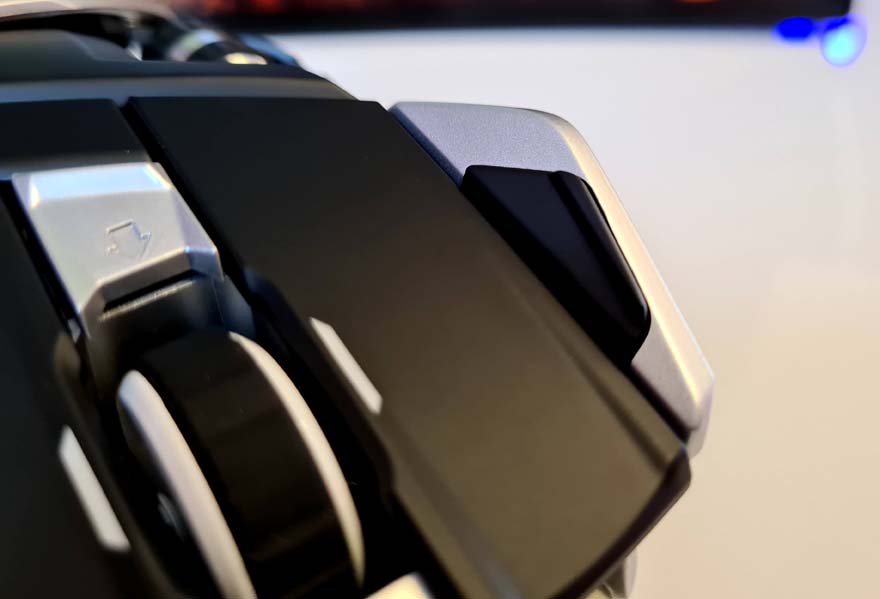
The mouse’s underside is stunning, with a single piece of metal folded to form all the mounts for the upper panels. It’s a solid style of construction. There’s a cut-out for the scroll wheel, allowing it to be larger and sit lower in the mouse body, and of course, a small cut-out for the sensor. One thing I love is that there’s a little USB dongle storage bit, just below where it says “push here”. Give it a push, and it’ll click and come free, simple yet effective.
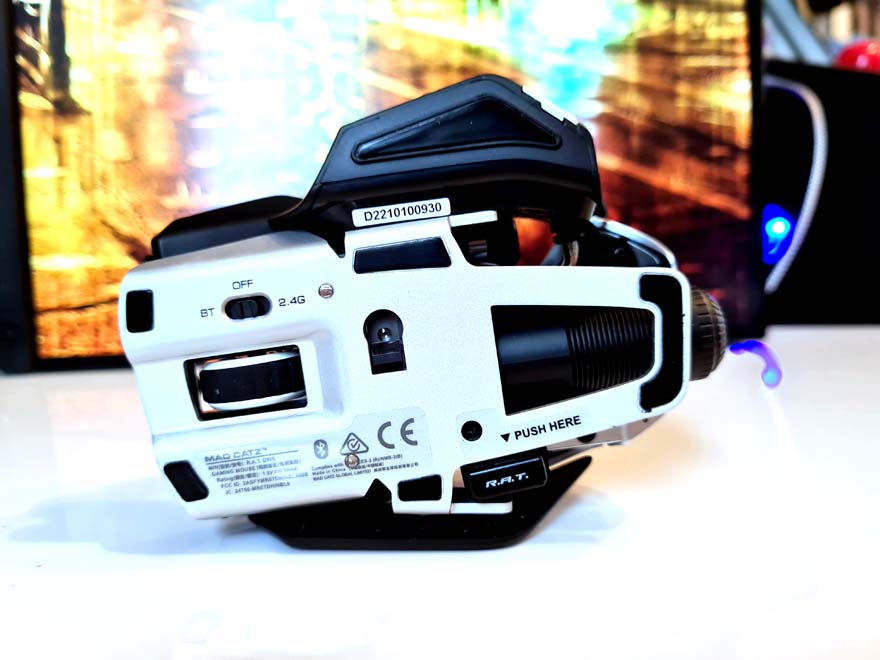
Configuration of the mouse is super easy, though. If you want Bluetooth or 2.4G connectivity, flick the switch on the underside of the mouse. Furthermore, that switch can also turn the mouse off completely to save power. As for the ergonomics, the handy little tool allows you to strip the side panel off, which the top panel has a locking slider adjustment. However, if you adjust it far enough, you can remove it completely.

By default, I find the mouse looks and feels great in my hands. Despite being so wide, it’s very nimble and glides far better than I expected, given the size of the contact area on the bottom.
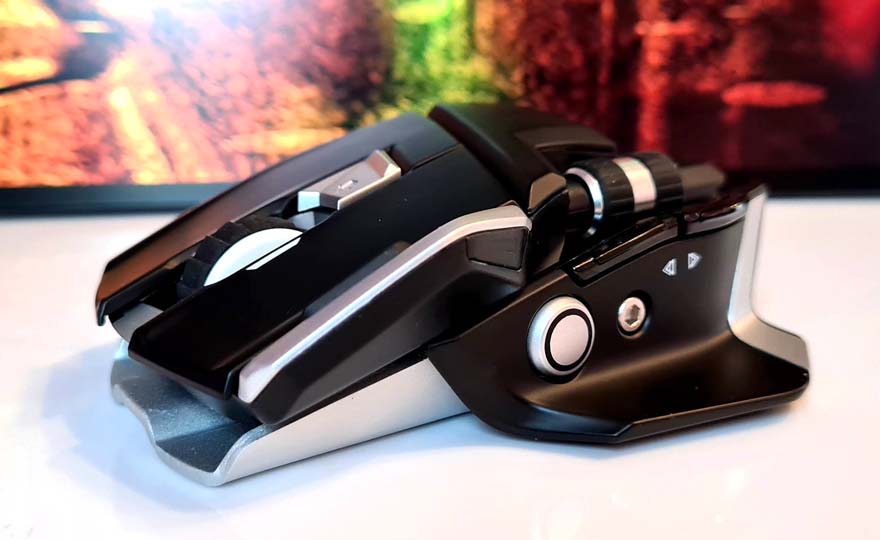
This is thanks to five PTFE pads on the bottom of the mouse and additional pads on the wing attachments and reduced friction due to the cut-away material on the underside of the mouse.
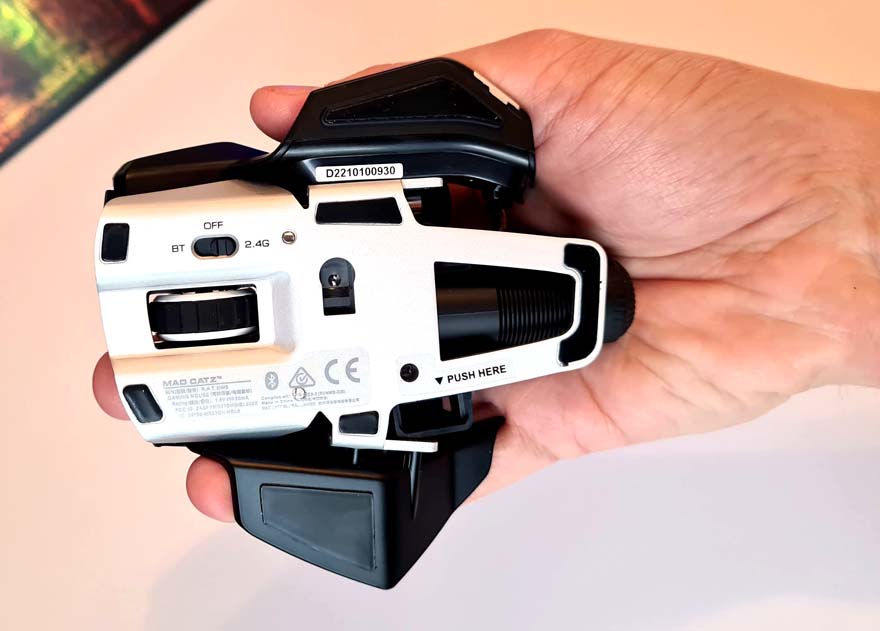
As you can see, the mouse can be made drastically wider with the right side wing in place. This is great is you want a lazy hand position that doesn’t drag on the desk. It’s great for those marathon-length MMO gaming sessions and can really reduce fatigue. Of course, you can opt for the slimmer grip, too, if you want to make it more suitable for a claw/fingertip grip type.
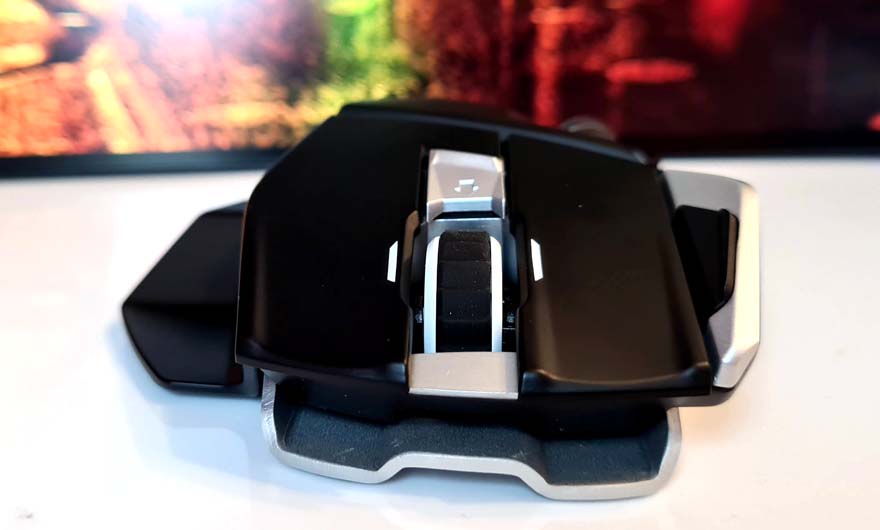
Overall though, the mouse offers rock-solid performance. There were no signal or latency issues that I could detect either. I mean, I’m not eSports pro, but I didn’t feel the wireless performance was holding me back either. The sensor phenomenal too, tracking silky smooth from the lowest settings right through to the maximum of 16,000 DPI, although I never really felt the need to go much about 6000 DPI myself. It’ll track at 400 IPS, with 40G acceleration and a 1ms response, so even the most enthusiast gaming session won’t throw this sensor off track.
